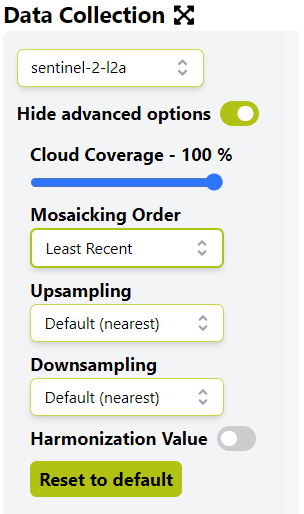Yes. It is possible to do this by modifying the Evalscript. A simple reverse() function can be used to reverse the output of the array.
//VERSION=3
// Script to extract a time series of NDVI values using
// Sentinel 2 Level 2A data and metadata file.
function setup() {
return {
input: [{
bands: ["B04", "B08"],
units: "DN"
}],
output: {
bands: 1,
sampleType: SampleType.FLOAT32
},
mosaicking: Mosaicking.ORBIT
}
}
// The following function is designed to update the number of
// output bands without knowing beforehand how many there are
function updateOutput(outputs, collection) {
Object.values(outputs).forEach((output) => {
output.bands = collection.scenes.length;
});
}
// function to generate a json file with a list of the NDVI
// dates used in the analysis.
function updateOutputMetadata(scenes, inputMetadata, outputMetadata) {
var dds = [];
for (i=0; i<scenes.length; i++){
dds.push(scenes[i].date)
}
outputMetadata.userData = { "acquisition_dates": JSON.stringify(dds.reverse()) }
}
function evaluatePixel(samples) {
// Precompute an array to contain NDVI observations
var n_observations = samples.length;
let ndvi = new Array(n_observations).fill(0);
// Fill the array with NDVI values
samples.forEach((sample, index) => {
ndvi[index] = (sample.B08 - sample.B04) / (sample.B08 + sample.B04) ;
});
return ndvi.reverse();
}
Alternatively, you can set the Mosaicking order to be Least Recent by enabling the Show advanced options in the Requests Builder.
